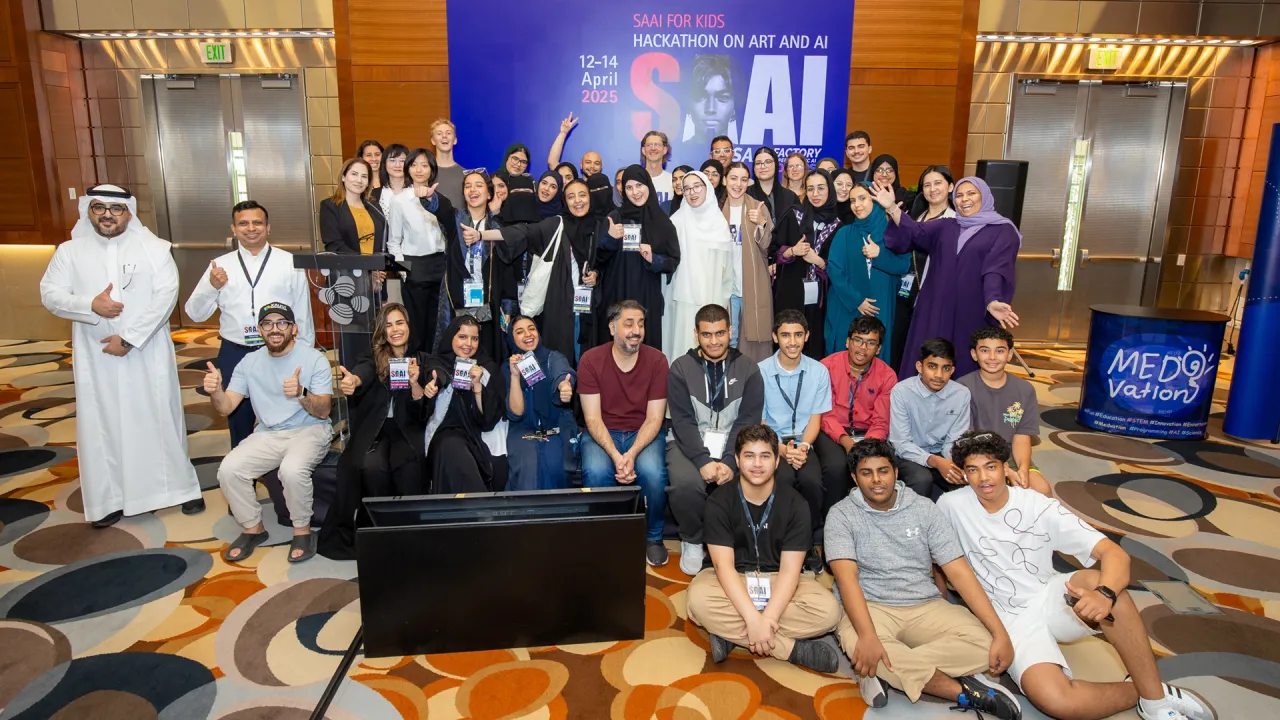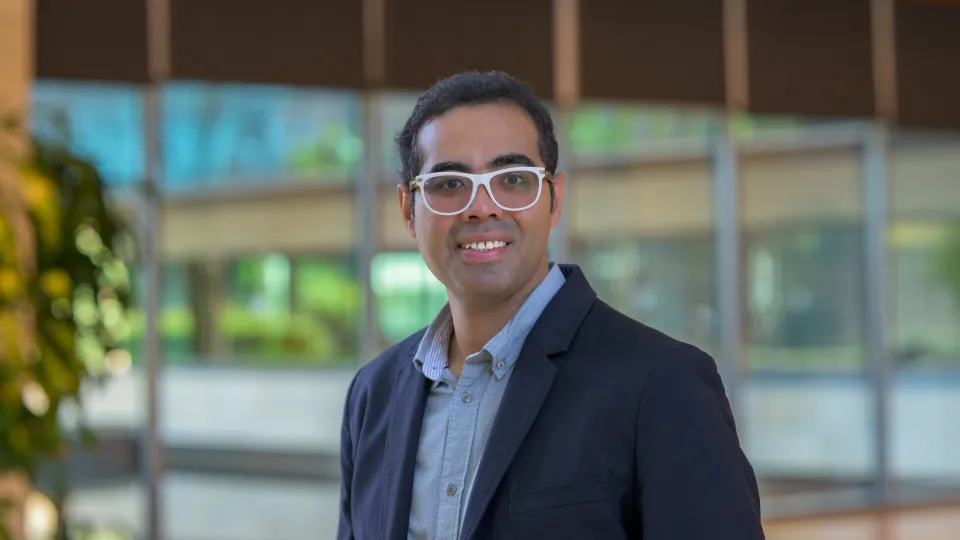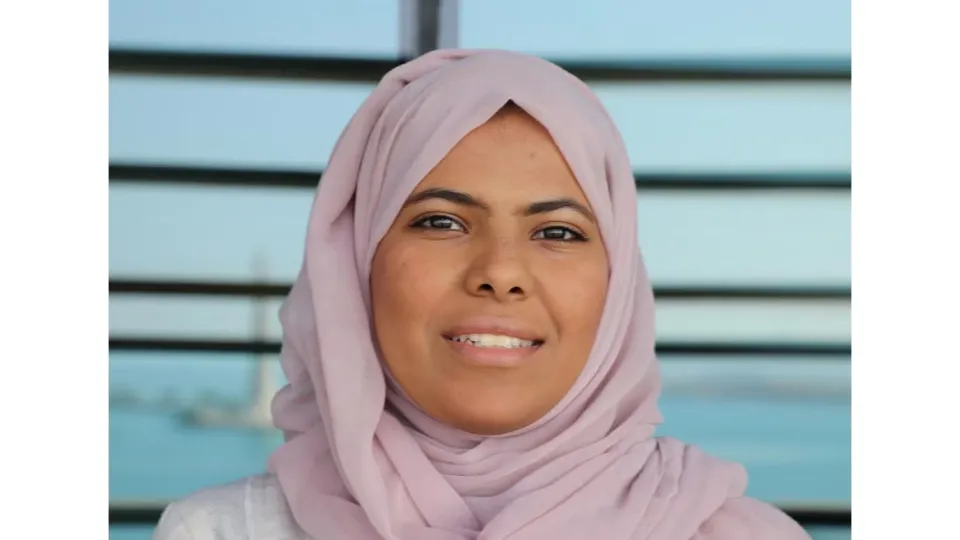
SAAI for Kids hackathon introduces Saudi youth to creative uses of AI
More than 200 students joined KAUST’s SAAI Hackathon to explore AI in art, music and design
About
Artificial intelligence is expanding how creativity is understood and expressed, forging new connections between technology, culture and innovation. In Saudi Arabia, this intersection is playing a central role in the Kingdom’s Vision 2030 transformation, with AI-driven artistic innovation supporting the growth of cultural industries and positioning the country as a hub for tech-powered design.
As part of this national momentum, KAUST is contributing through a range of initiatives that explore how emerging technologies intersect with creative thinking. One example is the Super Artistic AI (SAAI) Factory Hackathon — a hands-on platform within the University’s broader AI research and education ecosystem that focuses on artistic expression, human-centered design and generative tools.
Now in its third edition, the 2025 hackathon introduced a new youth-focused track as part of SAAI Factory, an international platform that explores the creative potential of artificial intelligence in artistic practice. The event brought together more than 200 students ages 13 to 18, both online and in person, to experiment with generative AI in storytelling, design and the arts.
The event was hosted by the Computer, Electrical and Mathematical Science and Engineering Division, in collaboration with KAUST Academy and Medvation, and featured mentorship by international artists, AI researchers and STEAM educators.
“Integrating the arts into AI education fosters a more holistic approach to innovation,” said Mohamed Elhoseiny, a professor of computer science at KAUST and chair of the hackathon. “It encourages young minds to combine analytical thinking with creativity, preparing them to design technologies that are not only intelligent but also deeply human.”
The hackathon gave students the opportunity to work in teams across three tracks — AI in framed art, AI in contextual art and AI in music. The projects they submitted reflected a wide range of ideas, with many focused on emotional storytelling, immersive learning, environmental awareness, inclusive design and real-time musical creativity. These efforts demonstrated how participants used AI not only as a technical tool but as a means to explore identity, foster empathy and address real-world challenges.
Among the standout projects was a concept called Classroom Alive, which envisioned an AI-powered learning environment where real-time visuals respond dynamically to a teacher’s lecture, turning lessons into immersive experiences. Another team tackled climate change through Climate Continuity, using AI-generated imagery to simulate how cities and landscapes might evolve over centuries, blending aerial photography with artistic interpretation.
Accessibility was another key theme. One team designed an AI system that adjusts color tones in real time to make visual artworks more perceptible to individuals with red-green color blindness. In the music track, a group developed an intelligent note recognition tool that listens to musicians and offers gentle guidance during moments of hesitation, described by the team as “a mentor beside you, ready to help.”
Another standout project, EcoVision, introduced AI-powered smart glasses designed to help blind and visually impaired individuals experience their surroundings through sound. By converting real-time visuals into recognizable audio cues, the system offers an intuitive way to navigate the world safely and independently.
“The hackathon and workshops were incredibly engaging and inspiring,” said participating student Lolya Shaheen, a member of the EcoVision team. “They provided a great platform to learn new skills, collaborate with others and turn creative ideas into real solutions. It was exciting to see so many innovative projects come to life in such a short time.”
Other projects ranged from AI-generated compositions inspired by traditional instruments to interactive storytelling platforms and empathetic design solutions. Throughout the hackathon, students demonstrated not only technical creativity but also a commitment to using AI in inclusive, culturally relevant and socially meaningful ways.
As part of the program, the Medvation team provided academic training and led AI-STEAM workshops in collaboration with professor of computer science Mohamed Elhoseiny’s lab — offering participants hands-on experience at the intersection of creative thinking and emerging AI techniques.
“This was a unique opportunity to connect with students through a lens that’s often missing from traditional STEM education,” said Sakhaa Alsaedi, a doctoral candidate in computer science at KAUST and founder of Medvation. “The hackathon allowed them to explore AI not just as coders but as designers and storytellers. Building on this momentum, we’ve expanded our collaboration with KAUST through a broader AI-STEAM initiative.”
By nurturing emerging talent at the intersection of technology and the arts, KAUST is contributing to the growth of a knowledge-based economy — one where innovation and cultural expression evolve together. These efforts also support Saudi Arabia’s broader goals for tourism and culture, offering new formats for sharing the Kingdom’s creative energy through immersive exhibitions, AI-generated narratives and interactive experiences.
“The intersection of AI and the arts opens up exciting new possibilities,” Elhoseiny said. “It helps young people see that they don’t have to choose between being creative or being technical — they can be both. That’s where real innovation begins.”
As KAUST continues to lead in advanced AI research, its investments in education, creativity and youth empowerment help prepare future generations to shape a more inclusive, dynamic and evolving knowledge economy in Saudi Arabia.

